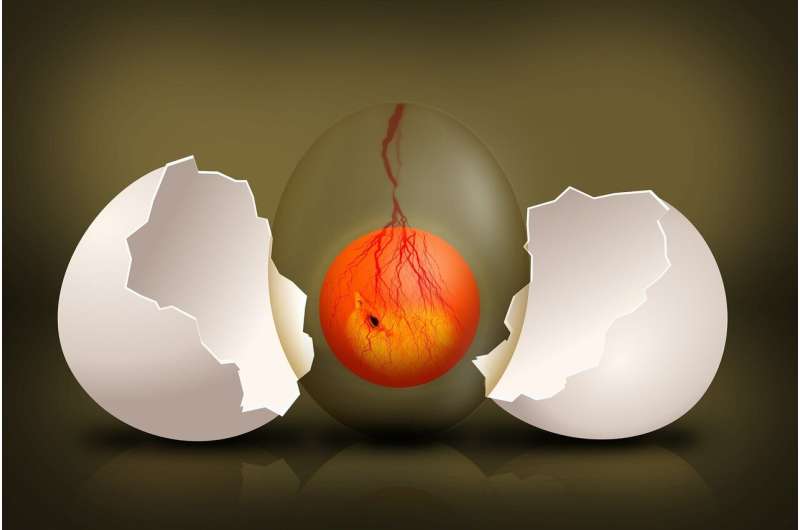Chicken embryo model allows researchers to assess toxicity of environmental pollutants

New research spearheaded by scientists at McGill University reports that exposing chicken embryos, a model of higher vertebrate development, to leachate from crumb rubber used for example in artificial turf infill allowed to assess the toxicity of environmental pollutants contained in such material.
The new study, published in the journal PNAS, by a team of scientists from McGill's Department of Chemical Engineering and Redpath Museum and Health Canada, is the first to use chicken eggs as a comprehensive model system for testing environmental toxins.
Nathalie Tufenkji, co-senior author of the new study and a professor in McGill's Department of Chemical Engineering, said the use of a "higher vertebrate" testing model has the advantage of being able to measure system-wide effects of environmental toxins, something for which previous models used to test the toxicity of crumb rubber—such as algae, water fleas, zebra fish and mammalian cell cultures- fell short.
"We were curious to understand what impact the crumb rubber might have on the environment and wildlife in general," Tufenkji said. "Precipitation on outdoor fields containing crumb rubber might lead to leaching of chemicals into the environment and how those chemicals may interact with vertebrate development and health are unknown."
This multidisciplinary effort demonstrated that the early development of chicken embryos is compromised when eggs are exposed to small amounts of water in which rubber crumbs soaked for seven days. When directly injected into the egg yolks, this leachate caused mild to severe malformations, including impaired development of the brain and the cardiovascular system.
Hans Larsson, a professor at McGill's Redpath Museum, says that their new chicken embryo model will provide useful information about how toxins disrupt embryo development of such a complex animal.
"Chicken eggs are, relatively speaking, closely related to mammals, including humans," said Larsson, the study's other co-senior investigator. "Their genome, anatomy, and development are closer to ours than the other standard models, so using them as a test system for environmental toxins may be the most efficient way to explore how these toxins might potentially affect human health."
Tufenkji and Larsson's teams now plan to further assess what kind of chemicals are released from crumb rubber under natural conditions in different environmental scenarios.
"We would like to test leachate from naturally weathered crumb rubber and track its potential effects on chicken embryo development," said Tufenkji.
More information: Elvis Genbo Xu et al. Artificial turf infill associated with systematic toxicity in an amniote vertebrate, Proceedings of the National Academy of Sciences (2019). DOI: 10.1073/pnas.1909886116
Journal information: Proceedings of the National Academy of Sciences
Provided by McGill University




















